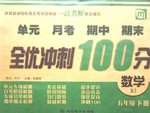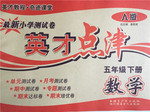题目内容
Pierre Curie stopped his research and _______ Marie in the search of an unknown material.
- A.attended
- B.joined
- C.took part in
- D.joined in
B
这题考查近义词辨析:A. attended 参加(会议,学校,课) B. joined 参加(组织,人) C. took part in和D. joined in都是参加活动。因为横线后面的是:Marie,所以选B。句意是:皮埃尔停下研究和Marie一起找不知道的材料。选B。
这题考查近义词辨析:A. attended 参加(会议,学校,课) B. joined 参加(组织,人) C. took part in和D. joined in都是参加活动。因为横线后面的是:Marie,所以选B。句意是:皮埃尔停下研究和Marie一起找不知道的材料。选B。

练习册系列答案
 全优冲刺100分系列答案
全优冲刺100分系列答案 英才点津系列答案
英才点津系列答案 红果子三级测试卷系列答案
红果子三级测试卷系列答案
相关题目
Pierre Curie stopped his research and _______ Marie in the search of an unknown material.
| A.attended | B.joined | C.took part in | D.joined in |